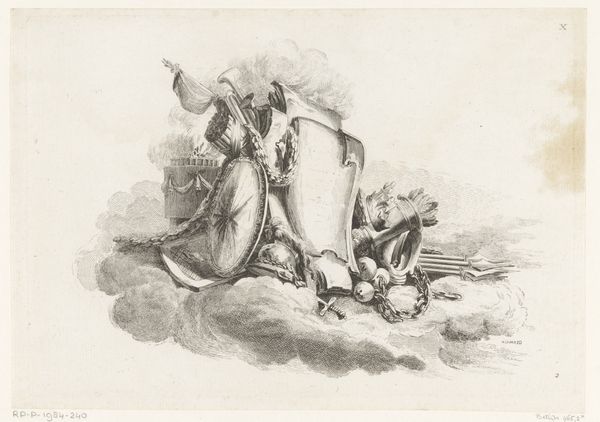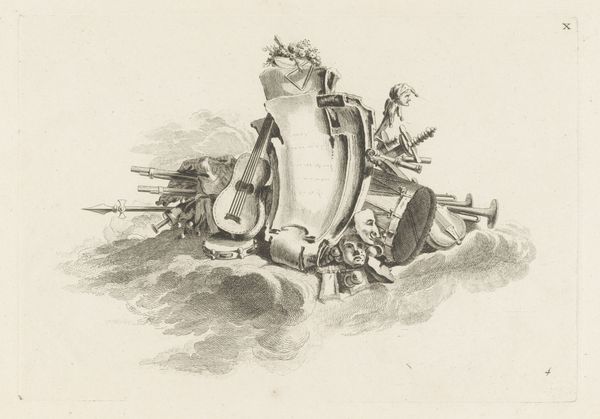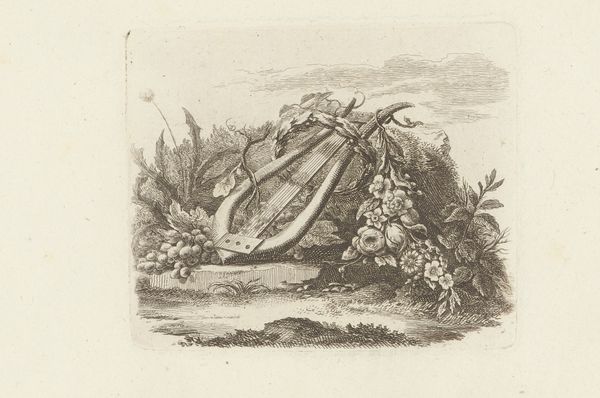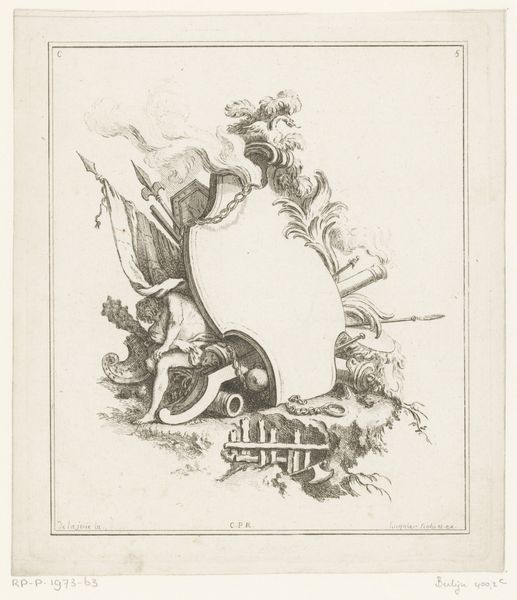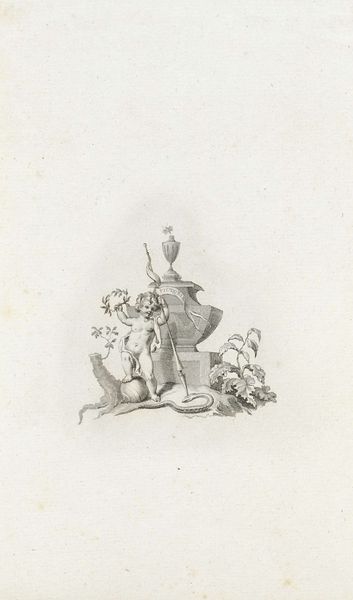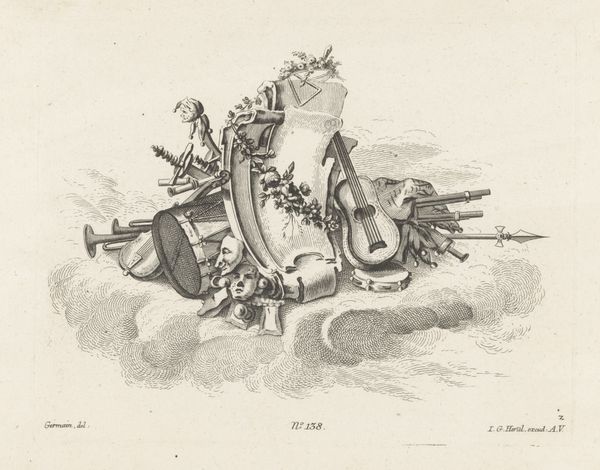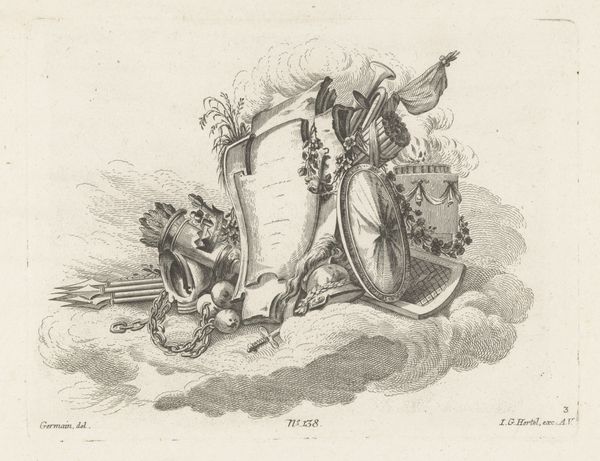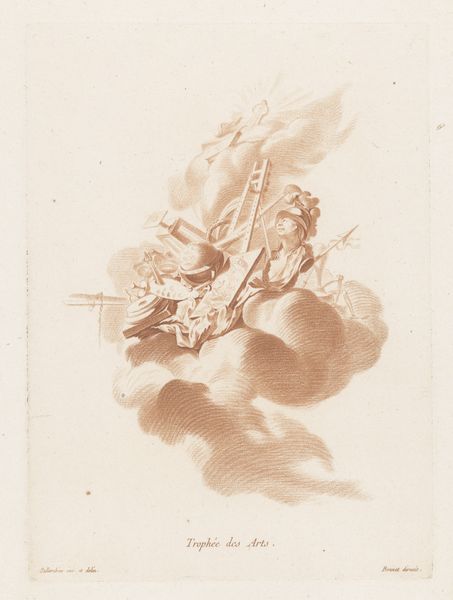
Dimensions: height 193 mm, width 283 mm
Copyright: Rijks Museum: Open Domain
Editor: We’re looking at "Cartouche met godenattributen," an etching and engraving by Louis Germain from 1771. All these symbolic objects—the helmet, the trident, the musical instruments—clustered around this blank cartouche give it such a celebratory yet also almost overwhelming feel. What story do you think this piece is trying to tell? Curator: It's fascinating how these classical symbols are deployed, isn't it? Consider the context: 1771. The Enlightenment is in full swing, yet we see a resurgence of classical imagery, deliberately invoking notions of power and order. This engraving, meant to be reproduced and circulated, participates in that visual rhetoric. It almost seems like an advertisement. For whom? For what? Editor: I see what you mean. So, this wasn't necessarily about personal artistic expression. But more so about serving the establishment or some powerful figure, using recognizable imagery? Curator: Exactly. It's about constructing a visual language of authority. What message are they trying to promote, and to whom? This deployment of imagery served the powerful in maintaining a narrative, or even shaping a consensus. Where do we see this today? Editor: So, analyzing it isn't just about appreciating the art itself, but thinking about its use and impact on its intended audience… that's incredibly thought-provoking! I’ll definitely look at art differently now. Curator: And understanding that role can illuminate aspects of society otherwise obscured by the supposed beauty, or lack thereof, within the aesthetic alone. This cartouche doesn't merely represent power; it performs power through visual language.
Comments
No comments
Be the first to comment and join the conversation on the ultimate creative platform.
